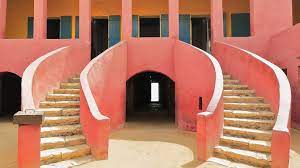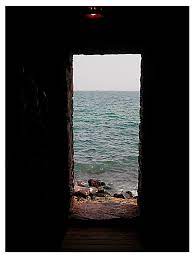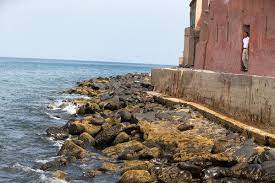Portuguese, who arrived on the island first in 1444, are the first Europeans to be recorded as having traded slaves there in 1536. In 1776, the slaves' home was constructed. The only remaining slave house in Goree was constructed by the Dutch and is now a museum. It is said that the island serves as a memorial to the Black Diaspora.

Between the middle of the 1500s and the middle of the 1800s, an estimated 20 million Africans visited the Island. Goree Island used as a storehouse for the storage of slaves during the transatlantic traffic in African men, women, and children. Many West Africans were seized against their will in the millions. These Africans were transported to Goree Island, bought as slaves, and kept there in a holding facility until they were transported across the Atlantic. To build a new world, they were sold throughout North America, the Caribbean, and South America. Slaves on Goree Island had awful living conditions.
Humans were bound and chained. Up to 30 guys would be seated in a cell that was only 8 square feet and had a tiny window facing the outside. They were fed and given permission to take care of their needs once every day, but the house was still infested with sickness. They were clothed about their waists but otherwise were bare. They were placed in a lengthy, thin cage designed so they could lie on the floor with one another. The kids' mothers were taken away from them. Probably unable to hear their children's cries because their mothers were across the courtyard. The disobedient Africans were imprisoned in a cramped, unpleasant space beneath the steps, and seawater was sipped through the holes to increase dehydration.

Balls and celebrations were taking on over their heads in the dealer's flats. The small "door of no return," through which every man, woman, and child marched to the slave boat, obtaining a final sight of their country, was, nevertheless, much more tragic and heartbreaking than the cells and the chains.

There were 6000 people residing on the island in 1848, 5000 of whom were former slaves after France had outlawed slavery. Goree Island in the twenty-first century still bears and preserves all the remnants of its horrible past despite being designated by the United Nations Educational, Scientific, and Cultural Organization (UNESCO) as a World Heritage Site.
The main Slaves' House, constructed in 1777, is still standing, complete with cells and shackles, as are the Historical Museum, Maritime Museum, residential buildings, and forts. Currently, the island is home to roughly 1000 people.
source: African archieves
